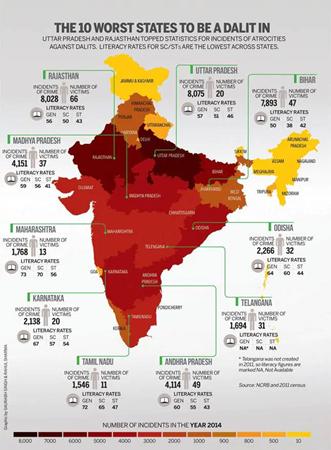



1.jpg) Disclaimer: Copyright infringement not intended.
Disclaimer: Copyright infringement not intended.|
Poona Pact was signed by Ambedkar on behalf of the depressed classes and Madan Mohan Malviya on behalf of the Upper Caste Hindus as a means to end the fast of Gandhi. Gandhi was undertaking the fast in jail as a protest against British Prime Minister Ramsay MacDonald’s decision to give Separate electorates to depressed classes for the election. |
|
The State shall promote with special care the educational and economic interests of the weaker section of the people, and in particular, of the Scheduled Castes and the Scheduled Tribes, and shall protect them from social injustice and all forms of exploitation." |
Dalit women
Bonded labour
Forced prostitution
Manual scavenging
Political participation
Non-implementation of legislation

1.jpg)
© 2024 iasgyan. All right reserved